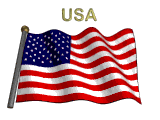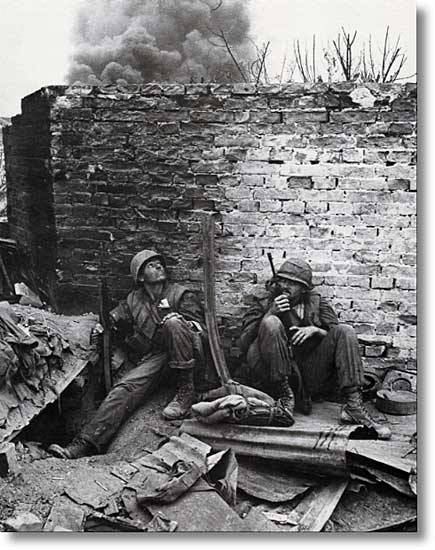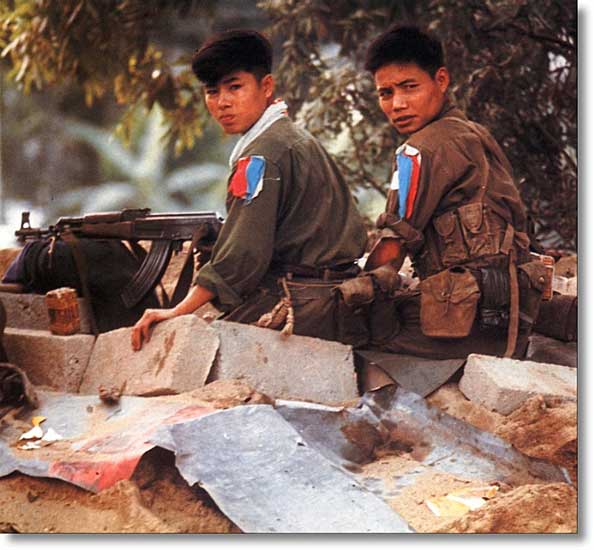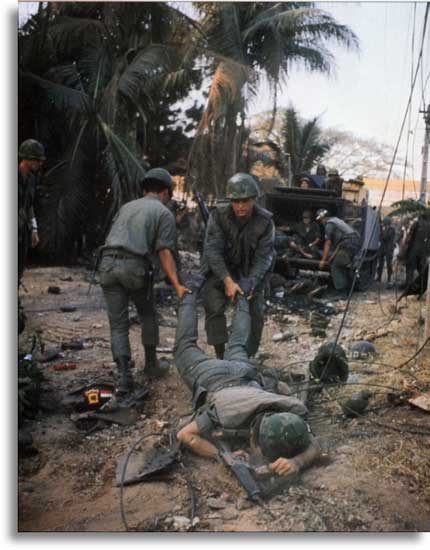
The 60s Official Site
"Where Music is Our Middle Name"
Quick Links
Your Daily Oldies Fix Top Ten Countdown Solid Gold Memories Jukebox Music
Vibration of a Nation Remember When Television of the 50s and 60s 60s Slang
Things You Just Don't Hear Anymore 60s TV Commercials Chickenman Episodes Woodstock This Weeks Number One Hits
The Early Years of Rock and Roll Vietnam War Myths
All the content menu is listed on the left menu border bar
The Tet Offensive - An Explaniation
The TET Offensive was a series of battles in the Vietnam War. It was a major offensive by the North Vietnamese Army (NVA) and Viet Cong (VC or NLF) beginning on the night of January 30-31, 1968, T?t Nguyên Ðán (the lunar new year day). It involved military action in almost every major city in southern Vietnam and attacks on the US firebase at Khe Sanh. The NVA suffered a heavy military defeat but scored a priceless propaganda victory. The Communist forces had taken a series of military defeats. the US/ARVN forces had pacified much of the south by the end of 1967 (222 out of 242 provinces). Operation Junction City (February-March 1967) and other sweeps had seriously disrupted NLF activity in the south and forced the COSVN into Cambodia. At a July 1967 meeting the Communist Party leadership recognised their failures and decided to re-orientate their operations to target two key political weaknesses. Firstly, the deep gulf between the US public and the US government over support for the war and its actual progress. Secondly, the tensions existing between the US military and their Vietnamese allies. The leadership decided to concentrate on a few high profile operations, that would take place in the public (and the US media) eye rather than fighting the conflict away from major urban centres. This would bolster Northern moral, possibly inspire uprisings in the South and provide the impression, and hopefully the reality, that the US/ARVN were not winning the war and it was likely to be a long time before they did. The new policy also marked a victory for the 'hawks' over the 'doves' in the Communist Party leadership, in late 1967 around 200 senior officials were purged. The overall planning of the operation to match the policy was headed by the commander of the NVA, Vo Nguyen Giap. He planned a series of audacious, prominent raids across the south, involving every significant city and utilising almost every unit to hand in almost forty major attacks and countless smaller incidents. In pure military terms this was almost madness, but Giap was pursing the overall policy and was acutely aware that the weaknesses in US military policy could produce success in the longer term from a short term disaster. He also strongly hoped that the NLF and NVA efforts would provoke a general popular uprising in the south. Tet had traditionally been a truce during war in Vietnam, the NLF
had had some form of truce since fighting began against the French. With the need for surprise paramount the NLF
and the NVA announced that they would respect a seven day cease-fire from January 31. This unusually long period
was designed to comfort the US military, who would interpret it as the action of a force in real need of a break,
and also encourage ARVN commanders to give their troops home leave. The NVA was aware of the resentment attacking
at Tet would cause amongst civilians. The most significant and costly deception was to offer the US a major threat away from the urbanised south. Two major US bases to the north, near the border, were targeted. With the memories of Diên Biên Phû it was hoped that the attacks on isolated outposts would draw heavy US military (and media) attention. The two bases were at Dak To and Khe Sanh. Dak To was attacked over November and the Khe Sanh attack would begin a few days before the other operations in the south. The similarities between Diên Biên Phû and Khe Sanh were intended to beguile US advisors. Khe Sanh was near the Ho Chi Minh Trail, only 20 km from the north-south border and 8 km from Laos, in high and difficult terrain resupply could be impossible in poor weather and the base sprawled over a wide area. The nearby Special Forces base at Lang Vei also looked vulnerable. Khe Sanh was defended by two regiments of the USMC commanded by Colonel Lownds and a numerically similar ARVN force. In the face of all the intelligence the US military response was uneven. The belief that Khe Sanh was about to be a major battle was well established, MACV staff became certain that a decisive clash was imminent. The base was reinforced and thousands of UGSs were scattered in the surrounding jungle in Operation Niagara. US intelligence identified at least 15,000 NVA troops in the vicinity. The fighting was most intense around Khe Sanh. There were three divisions of NVA regulars around Khe Sanh, possibly 25,000 men. Action began there around ten days before Tet, with probing attacks and exchanges of artillery fire. Two hill positions were captured on January 20, cutting the base from land routes. Attention in MACV and Washington was obsessed with Khe Sanh and other indicators of trouble were overlooked or down-graded. The main assaults did not begin until February 5. Lang Vei was over-run on February 7 and the lines at Khe Sanh were very heavily attacked, the camp only being preserved by massive airstrikes and artillery barrages (over 30,000 sorties were flown in defence of the base). After this the tempo slowed, the battle became more of a siege, although there were further NVA assaults on the 17-18th and the 29th. Khe Sanh was officially relieved on April 6 and fighting ended around April 14. Possibly 8,000 NVA soldiers died around Khe Sanh. Two Marines take shelter against incoming shells in Hue during the Tet offensive.
North Vietnamese soldiers in Hue guard a position with Chinese-made AK47 rifles. To photograph NVA units, French photographer Catherine Leroy worked her way behind Communist lines during the battle. Hué was attacked by ten battalions, the city was almost completely over-run and thousands of civilians were chosen for execution. The city was not recaptured by the US and ARVN forces until the end of February. The historical and cultural value of the city meant that the US did not apply the air and artillery strikes as widely as in other cities, at least at first. There was a tough street-by-street battle (all caught by the US media), heading towards the Citadel, the imperial palace, which was cleared of NVA troops after four days of struggle. The US and the ARVN had lost 482 men and the NVA around 7,500.
Americans hastily drag away the body of a comrade killed during a VC attack near Tan Son Nhut Airport on January 31, 1968. The VC made a direct hit on a truckload of MPs, then raked the area with automatic fire as survivors dived for cover. There were a number of attacks in and around Saigon, around five battalions of NLF had infiltrated the city. Tan Son Nhut airbase, the headquarters of the ARVN and MACV, was attacked by around 700 men and there was heavy fighting but only 110 American casualties. Bein Hoa airbase was also attacked and twenty aircraft were destroyed. The Vietnamese casualties in these two assaults and other actions in Saigon were over 1,100 men but they took control of large parts of the city. Fighting lasted almost a week and some sections of the city were badly damaged by US airstrikes and artillery, the suburb of Cholon was very badly damaged as fighting there lasted into mid-February. One especially potent assault was on the US Embassy by twenty NLF commandos, while quickly contained it became a highly symbolic assault producing memorable images. The NLF and the NVA lost around 35,000 men killed, 60,000 wounded and 6,000 POWs for no military success. The US and ARVN dead totalled around 3,900 (1,100 US). But this was not the conflict as the US public saw it. Without there being an active conspiracy the US media reports were extremely damaging and shocked the American public and politicians. Apparently the depth of the US reaction even surprised the North Vietnamese leadership, as well as delighting them. The heavy US shelling of Ben Tre produced the famous quote, "it became necessary to destroy the town in order to save it." Khe Sanh was abandoned by the US on June 23, 1968. |
|








